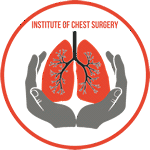Chest trauma, whether caused by accidents, falls, or severe blows to the chest, can lead to significant physical and emotional distress. Recovering from chest trauma is a multifaceted process that depends on various factors, including the type and severity of the injury, the individual’s overall health, and the effectiveness of the treatment provided. In this article, we will explore the stages of recovery from chest trauma, common injuries affecting the chest, and essential factors that influence the healing process. If you or a loved one are dealing with chest trauma, understanding the recovery timeline and potential challenges can provide valuable insights and aid in a smoother road to recovery.
1. Understanding Chest Trauma and Common Injuries
Chest trauma encompasses a wide range of injuries to the chest region, including the ribs, sternum, and internal organs like the lungs and heart. Common types of chest trauma include rib fractures, sternal fractures, lung contusions, and pneumothorax (collapsed lung). Motor vehicle accidents, sports injuries, falls, and physical assaults are common causes of chest trauma.
Rib fractures are among the most prevalent chest injuries and can be especially painful, hindering normal breathing and movement. Sternal fractures involve the breastbone and can lead to complications like difficulty breathing deeply or pain during coughing.
Lung contusions occur when the lung tissue is bruised, often due to a blunt force impact, leading to impaired gas exchange and breathing difficulties. Pneumothorax, on the other hand, involves the accumulation of air in the pleural space, causing lung collapse and requiring immediate medical attention.
2. The Recovery Timeline for Chest Trauma
The recovery period for chest trauma can vary significantly based on the severity of the injury and individual factors. It is essential to recognize that recovery is a gradual process and may take several weeks to months, depending on the extent of the damage.
a) Early Stages of Recovery (1-3 weeks)
During the initial phase of recovery, the focus is on pain management and stabilizing the patient. Pain medications are prescribed to alleviate discomfort, allowing for better breathing and mobility. Rest and limited physical activity are typically recommended to avoid exacerbating the injury.
For individuals with rib fractures, deep breathing exercises are encouraged to prevent lung complications like pneumonia and to maintain lung function. In cases of lung contusions or pneumothorax, hospitalization and, in severe instances, the insertion of a chest tube might be necessary to drain air or fluid from the pleural space.
b) Mid-Stages of Recovery (4-8 weeks)
As the pain subsides and the chest begins to heal, patients may gradually resume light activities and controlled movements. Physical therapy may be introduced to strengthen the chest muscles and improve flexibility. Breathing exercises continue to be crucial to prevent lung complications and enhance lung capacity.
For individuals with sternal fractures, sternotomy recovery can be complex, especially for those who have undergone heart surgeries. Doctors closely monitor heart function and may prescribe cardiac rehabilitation to aid in the recovery process.
c) Late Stages of Recovery (2-6 months)
In the later stages of recovery, patients often experience significant improvements in pain and mobility. Physical therapy becomes more intensive, focusing on restoring full chest movement and strength. Regular follow-ups with healthcare professionals are essential to monitor progress and address any lingering issues.
3. Factors Influencing Recovery
Several factors play a pivotal role in determining the recovery timeline for chest trauma:
a) Injury Severity: The extent of the chest trauma and the presence of associated injuries can significantly impact the recovery process. Severe injuries may require surgical intervention and prolonged hospitalization, extending the recovery period.
b) Age and Overall Health: Younger individuals with generally good health tend to recover faster than older patients or those with pre-existing medical conditions. A robust immune system and healthy lung function are critical for a smoother recovery.
c) Timely Medical Attention: Receiving prompt medical care and accurate diagnosis after chest trauma is crucial for better outcomes. Timely treatment can prevent complications and promote faster healing.
d) Compliance with Treatment: Following medical advice, attending physical therapy sessions, and adhering to prescribed medications are essential for a successful recovery.
e) Lifestyle Factors: Lifestyle choices, such as smoking and poor nutrition, can hinder the healing process. Avoiding smoking and consuming a balanced diet rich in nutrients are beneficial for recovery.
Conclusion
Recovering from chest trauma is a journey that requires patience, perseverance, and professional support. Understanding the recovery timeline and the impact of various factors can help patients and their caregivers prepare for the challenges ahead. Timely medical attention, compliance with treatment plans, and a positive outlook can significantly contribute to a successful recovery. If you or someone you know is dealing with chest trauma, consulting a qualified healthcare professional and following their advice is vital to ensure a safe and efficient healing process. With proper care and dedication, individuals can reclaim their health and regain their quality of life after experiencing chest trauma.







